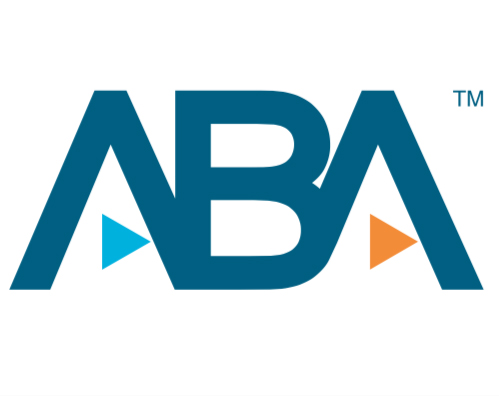How to make better decisions with litigation analytics software

Nicole Black.
If you’re a litigator, you know that knowledge is power. The more you know about the court, opposing counsel, expert witnesses, the parties and the judge, the better. This is because more information allows you to make sound, informed decisions to help you achieve a successful end result for your client.
It used to be that personal experience and word-of-mouth were the primary vehicles through which you obtained information about the players in a given case. For local cases, those reference points were often sufficient. But the further removed a case was from your local jurisdiction, the more difficult it often was to obtain actionable data points to make litigation decisions.
And even when litigation and court-related information eventually became accessible online through PACER, obtaining and reviewing court filings one by one was a time-consuming and tedious process. Certainly, there was the potential for court data and filings to provide a wealth of information about judges and their rulings, as well as litigants, attorneys, expert witnesses and others involved.
But in the absence of software that could quickly sift through the vast amounts of data, the significant upfront investment of time needed to make sense of the information simply didn’t pay off in the long run due to information overload.
At least, that’s the way it used to be. Today, it’s a different world. With the maturation of artificial intelligence software, advanced data analytics and sophisticated language processing are now possible on scales never before seen. As a result, litigation analytics software that uses artificial intelligence is readily available and are increasingly gaining in popularity.
According to the 2020 ABA Legal Technology Survey Report, 45% of all responding lawyers reported that their firms had used legal analytics in the past year. Larger firms with over 100 attorneys were most likely to do so (68%), followed by firms with 10 to 49 lawyers (50%), firms of two to nine attorneys (40%) and coming in last were solo attorneys (31%). The top types of legal analytics used were to conduct legal research (29%), develop case or matter strategy (19%), understand judges (15%) and business development (14%).
The reason lawyers are using this type of software more often is because it solves the information overload problem. Using these tools, massive amounts of litigation data can be sifted through, organized and analyzed in mere seconds. After accessing relevant data sets, this software provides litigation attorneys with the information they need to make informed decisions.
It’s not surprising that in 2020, lawyers have many options when it comes to data analytics tools, and there are a number of different types of analytics software programs available that provide a host of insights into different aspects and players in the litigation process. For example, judicial analytics tools offer insight into the rulings and decision-making processes of judges and often provide insight into whether a particular type of motion will be successful if brought before a given judge.
Similarly, law firm analytics provide an analysis of data relating to a given firm’s prior litigation history, including case outcomes, clients represented and the lawyers assigned to given cases.
Company analytics include data regarding a company’s litigation history, such as lawsuits, outcomes and the law firms that handled the litigation. Expert witness analytics typically cover data about expert witnesses’ involvement in past litigation, including their CVs, which parties they testified for and whether their testimonies (or parts of it) were excluded.
There is also case analytics that focus on specific types of cases and include data on the number of cases filed, the length of the time that the case was pending in court and appearances in the cases.
Products and results may vary
Now that you have an understanding of the types of data covered, how the data is analyzed and how many lawyers are already using this software, let’s dive into the software. Here are a number of options to consider if your law firm is in the market for litigation analytics software.
When researching this type of software, it’s important to understand that each product only includes the analysis of certain types of data. Many cover federal district courts and some include federal appeals courts. In most cases, coverage at the state level is spotty at best, if it’s even included. Unless otherwise indicated, the pricing information for these products is not available on their websites.
Also of note is that results will vary greatly from one product to the next, as shown by the results of a recent study. Even so, many lawyers will find these products to be useful. So, without further ado, here’s a quick rundown of some of your options.
First, there are two products offered by LexisNexis: Lex Machina and LexisNexis Context. Lex Machina, which was acquired by LexisNexis a number of years ago, was one of the first litigation analytics products released. Its AI-based software analyzes court dockets and provides data on all aspects of litigation, including trends gleaned from data relating to judges and courts, law firms and attorneys, the parties and other strategic information, such as case damages for certain types of matters.
In comparison, Context relies on case law data that is analyzed using natural language processing. It provides insight into patterns gleaned from a judge’s rulings on a particular issue, the testimony across different cases by a specific expert witness, court analytics and a company’s litigation history. One new feature recently added to company analytics is the inclusion of additional information related to a specific inquiry, including news coverage and financial data. Context is available to subscribers of Lexis (formerly known as Lexis Advance) and Lexis+.
Next, let’s take a look at Westlaw’s legal analytics products, Westlaw Edge and Thomson Reuters’ Monitor Suite. Westlaw Edge is Thomson Reuters’ advanced legal research product and it includes litigation analytics regarding judges, courts, attorneys, law firms and case types. It includes comparison tools for judges along with a newer feature, Precedent Analytics, which provides insight into trends obtained from a particular judge’s decisions.
Thomson Reuters’ Monitor Suite is business development software, first and foremost. But it also includes legal analytics tools that make it possible to predict case outcomes, obtain litigation data and trends, analyze IP filings and litigation data and compare and review information on attorneys, companies and law firms.
Next, there’s Premonition’s Legal Analytics. This software provides analytics on lawyers, judges and courts, companies, law firms and expert witnesses and arbitrators. The litigation analytics tools are marketed to a broad customer base that includes law enforcement, insurance claims adjustors and attorneys. One notable feature is that it provides real-time court monitoring and analytics on pending litigation matters, along with data on new cases as they’re filed.
Gavelytics is another contender. When I wrote about litigation analytics software two years ago, Gavelytics only provided judicial analytics. It has since expanded its database and now provides analytics on judges, law firms, lawyers and litigants. It boasts a large database of state litigation documents, which is one way it sets itself apart from other players in the market.
Next there’s Docket Navigator, which provides judge and opposing counsel analytics for patent, copyright, trademark and antitrust matters. For a single user, access to the patent database analytics starts at $79 per month; access to the copyright, trademark and antitrust databases costs an additional $46 for a single user per month for each single database library (e.g. the trademark library).
The monthly price per user decreases via a tiered system as more users are added, capping with an enterprise rate at $1,925 per month for access to the patent database and an additional $998 per month per additional database.
Another option is Docket Alarm, which also includes litigation analytics features. Docket Alarm was acquired by Fastcase in 2018, and in addition to providing docket tracking and case alerts, it also offers analytics that predict the likelihood of success in a given matter based on data regarding the judge, the technology area, the law firms involved and the parties. Flat-fee pricing is $99 per user per month if you’re interested in analytics, although other features such as case or docket alerts can be purchased à la carte.
Finally, legal analytics tools are sometimes included as part of a more comprehensive legal research subscription as well. For example, Bloomberg Law also includes legal analytics in its platform. It provides analytics for a number of different categories, including parties, judges, attorneys and law firms.
So those are some of your options when it comes to litigation analytics software. When it comes down to choosing the right product for your firm’s needs, make sure that you fully understand the jurisdictions included, the type of analytics provided, how the AI works, what type of data it relies on (dockets alone or other types of data such as news coverage, etc.) and how much it will cost your firm on a monthly or annual basis to use the software.
If a trial period is offered, make sure to take advantage of it; that’s the only way to ensure that it truly provides the tools your firm needs and that it does so in an intuitive manner. With that advice in mind, you’re sure to find a tool that will provide your litigation attorneys with the information and insight they need to make informed, actionable decisions and achieve the best outcomes for your firm’s clients.
Nicole Black is a Rochester, New York, attorney, author, journalist and the legal technology evangelist at MyCase, legal practice management software for small firms. She is the nationally recognized author of Cloud Computing for Lawyers and is co-author of Social Media for Lawyers: The Next Frontier, both published by the American Bar Association. She also is co-author of Criminal Law in New York, a Thomson Reuters treatise. She writes regular columns for ABAJournal.com, Above the Law and the Daily Record, has authored hundreds of articles for other publications, and regularly speaks at conferences regarding the intersection of law and emerging technologies. Follow her on Twitter @nikiblack, or she can be reached at [email protected].
Updated Oct. 29 to correctly state the name of LexisNexis’ products.



